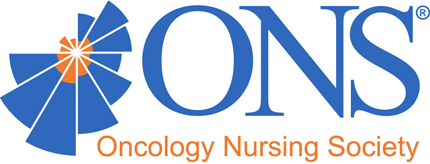Episode 311: Standardized Pregnancy Testing Processes in Cancer Care
“Chemotherapy exposure during the first trimester is contraindicated and increases the risk of spontaneous abortion, fetal death, and major congenital malformations. Second- and third-trimester exposure may affect some body systems still developing and can still result in fetal growth restriction, low birth weight, and preterm labor. Yet, I do want to stress that pregnancy can remain a possibility,” Kelsey Miller, MSN, RN, AGCNS-BC, OCN®, clinical nurse specialist in oncology and infusion therapy at Reading Hospital in West Reading, PA, told Jaime Weimer, MSN, RN, AGCNS-BS, AOCNS®, manager of oncology nursing practice at ONS, during a conversation about policies and procedures for pregnancy testing during cancer treatment.
Music Credit: “Fireflies and Stardust” by Kevin MacLeod
Licensed under Creative Commons by Attribution 3.0
Earn 0.25 contact hours of nursing continuing professional development (NCPD) by listening to the full recording and completing an evaluation at courses.ons.org by May 10, 2026. The planners and faculty for this episode have no relevant financial relationships with ineligible companies to disclose. ONS is accredited as a provider of nursing continuing professional development by the American Nurses Credentialing Center’s Commission on Accreditation.
Learning outcome: Learners will report an increase in knowledge related to pregnancy screening procedures during cancer treatment.
Episode Notes
- Complete this evaluation for free NCPD.
- Oncology Nursing Podcast episodes:
- ONS Voice article: The Case of the Pregnancy Predicament
- ONS book: Oncology Nurse Navigation: Delivering Patient-Centered Care Across the Continuum (second edition)
- Clinical Journal of Oncology Nursing articles:
- ONS Huddle Cards
- ONS Congress® abstract: System Approach to Fertility Preservation and Pregnancy Status During Active Cancer Treatment (by Kelsey Miller and Ainsley Hartman)
- ECHO program (Enriching Communication Skills for Health Professionals in Oncofertility)
- Journal of the National Comprehensive Cancer Network article: Pregnancy Screening in Patients With Cancer
- National Comprehensive Cancer Network Guidelines: Adolescent and Young Adult (AYA) Oncology
To discuss the information in this episode with other oncology nurses, visit the ONS Communities.
To find resources for creating an ONS Podcast Club in your chapter or nursing community, visit the ONS Podcast Library.
To provide feedback or otherwise reach ONS about the podcast, email pubONSVoice@ons.org.
Highlights From This Episode
“It’s really crucial to identify [pregnancy] prior to treatment, as this should be considered a patient safety ‘never’ event. We know that exposure to chemotherapy or radiation can cause mutagenic changes in reproductive cells and teratogenic effects in a developing fetus. Women of childbearing potential should have a documented pregnancy test prior to beginning cancer treatment due to the adverse effects of chemotherapy and radiation on a developing fetus.” TS 1:42
“We had a fertility risk checklist that was based off American Society of Clinical Oncology standards, that was not fully operationalized nor built into physician workflows. The checklist was a way of documenting that risks of infertility, fertility preservation, and contraception was discussed, as well as an attestation that referral to a reproductive endocrinologist was made if needed. I had a physician partner at the time who said the only way to get the providers to fill out this checklist is to make it a hard stop, so that’s what we did. The fertility risk checklist is now a hard stop by means of an order validation that will pop up when the provider goes to sign the oncology treatment plan, and it will say, ‘Orders cannot be signed unless the fertility risk checklist is complete.’” TS 9:27
“Whenever I develop teams, I like to share a common vision. We’re all here for patient safety, and we want to prevent harm by pregnancy screening these patients that could potentially become pregnant during cancer treatment.” TS 13:20
“There’s a misconception that all cancer therapy will render patients infertile, and this is not the case. Even though chemotherapy and radiation reduce fertility and may cause premature ovarian failure, many patients still remain fertile. And we know from research that physical intimacy remains important during cancer treatment, and unintended pregnancies may occur.” TS 18:13
Listen on:
Listen on Amazon Music, Listen on Apple Podcasts, Listen on Spotify, Listen on YouTube Music
ONS Podcasts
On-the-go discussions covering a wide array of clinical and leadership topics that you can earn NCPD for.
View All Podcasts
